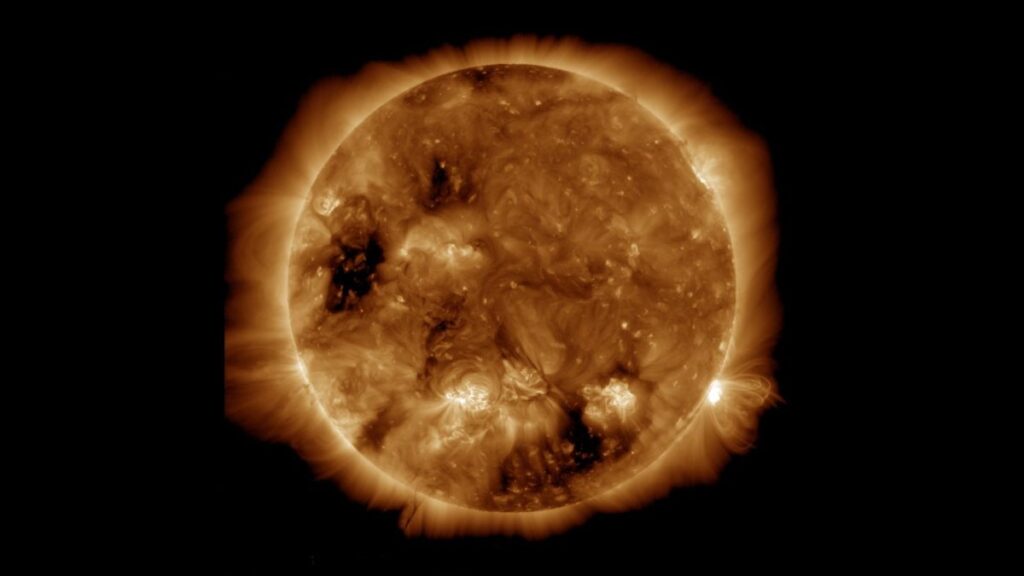A group of scientists has published a prediction of the development of the current, 25th cycle of solar activity. They indicate that it will reach its peak at the end of 2024, a year earlier than previously thought. But the most powerful flares should be expected after it.

Turbulent 25th cycle
A group of scientists led by American scientists Robert Leamon and Scott McIntosh has published a new forecast of solar activity for the current cycle. According to it, the maximum should be expected at the end of 2024, and not a year later than previously thought.
Solar cycles are long-term fluctuations in the activity of our luminary, lasting an average of 11 years. During this time, it passes minima when there are practically no spots and flares on it and maxima when there are more of them on its surface.
Cycles are counted from the beginning of observations in 1755, so the current is the 25th. The previous few were marked by a gradual decrease in activity, so the 24th was uniquely quiet. And at first, scientists expected that the 25th would be even quieter with a peak value of 115 spots per year.
However, since the beginning of 2022, it has begun to show its temper. The flares were getting stronger, and the spots were getting bigger. In February 2022, another magnetic storm even dropped several Starlink satellites from orbit. Scientists began to look for an answer where they made a mistake in their predictions.
New model of solar cycles
And it was Leamon and McIntosh who found the answer to it. Some time ago, they published a new forecast of how events would develop further and turned out to be much more accurate than the official one from NASA.
In a new study, they suggested that the 25th cycle would peak much earlier than expected — at the end of 2024, but it would be a little quieter than their own preliminary forecasts with a maximum number of spots of 185 per year. This is an average result if you compare it with the entire history of observations.
Scientists managed to solve this riddle due to the fact that they used a new method of analyzing solar activity. They drew attention to the fact that the strength of each subsequent cycle in history was determined by when the magnetic field of our luminary completely faded after the previous one. And this did not happen at the time of the minimum, as it was still believed, a year or two later.
For example, the transition from cycle 24 to cycle 25 did not occur in mid-2020, as considered, but only in December 2021. Leamon and McIntosh proposed calling this event the solar terminator. It was the introduction of it, and not the minimum, into the initial modeling data that made it possible to obtain an accurate forecast.
The Terminator is part of what scientists call the Hale cycle, a 22-year period of magnetic activity encompassing two 11-year solar cycles. During it, magnetic waves of opposite polarity move from the poles of the Sun to the equator, where they meet and cancel each other out. When these magnetic field lines pass about half of their path, the Sun’s magnetic field changes, which corresponds to the approximate time of the solar maximum.
Maximum is not the end of the problems
The Hale cycle ends when the magnetic field returns to its original state after two solar cycles. The terminator, the canceling out of the magnetic waves at the equator, can be traced in historical records of the formation of sunspots as the complete disappearance of sunspots in the equatorial region of the star.
According to scientists’ forecasts, such a change in the Sun’s magnetic field will occur in mid-2024, and in a few months there will be a maximum of activity. That is, magnetic storms on Earth will become more frequent and intense by this time.
But even after that, it’s not worth relaxing. According to scientists, the most powerful storms should be expected not when we are approaching the peak of activity, but when we begin to move away from it. That is, all the next five years will be tense.
According to www.space.com
Follow us on Twitter to get the most interesting space news in time
https://twitter.com/ust_magazine

